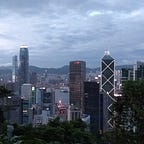From Maidan to Myanmar. The Colour Revolution Show
Why has a three-finger salute been adopted by protesters from Thailand to Myanmar? Why did rioters in Hong Kong carry bows and arrows as part of their lethal arsenal and famously declared “If we burn, you burn with us”? And why did the slogan “Hunger Games since 1994. Death to the regime” appear on banners in Belarus?
To answer these questions we need to look at how colour revolutions and the global media industry feed on each other to create mutually reinforcing spirals within the context of cultural imperialism, that systematic dissemination of cultural products, values, behaviors that conform with the interests of the hegemonic centre.It is also useful to consider how the reiteration of particular narratives across different media influences the construction of social and political identities.
When a colour revolution was instigated in Ukraine at the end of 2013, Western media outlets quickly drew parallels between the street battles in Kiev and a fictional rebellion against tyranny that had smashed box office records a year earlier. By conflating the Maidan square protest and The Hunger Games, a Hollywood film franchise, the media created an easily marketable hybrid, the “Ukraine-ger Games” — one part fact, two parts fiction — which would prove a very useful template for the promotion of subsequent colour revolutions to global audiences.
As marketing strategies revolve around hype, creating the buzz required a well-planned process that entailed building an online presence, using both established news channels and setting up new ones, increasing visibility on social media by recruiting influencers, bloggers, opinion leaders and last but not least celebrities.
Because taking part in a foreign-funded regime change is not as heroic as standing up for freedom, justice and democracy, these concepts are usually evoked to mobilize the masses: stripped of any potentially divisive ideological connotation (colour revolutions are inter-classist) they remain open to interpretation in order to ignite the imagination. If disembodied ideals alone don’t spark a mass movement, then the media industry can easily produce cool role-models: Ukrainian pop star Ruslana Lyzhychko, conspicuously on the front line of protest, was compared by Newsweek to The Hunger Games’ heroine, Katniss Everdeen. With a vague resemblance to the actress playing the fictional character, she was perfectly cast in the role of revolutionary icon.
Anyone can play a role in the Ukraine-ger Games and obtain recognition, be it thousand of ‘likes’ and followers on social media or an interview on CNN. No previous political experience required: the film trilogy provided a rich repertoire of visual themes and scripted lines that could be readily repurposed as agit prop material: “Ukraine is the 13th District in the Center of Europe. I appeal to you: Rise up!!! Demand sanctions for Ukraine right now!”. The reference to the fictional 13th district wouldn’t be lost on young audiences both at home and abroad, as they all consume the same global pop culture that colonizes their imaginary.
In 2014 this successful format made its appearance in Thailand and Hong Kong, where protesters adopted the three-finger salute alongside signs and slogans in English for the sake of global audiences. Although this salute dates back to the French Revolution, those who started using it in Hong Kong, Bangkok and Yangon knew it only as the Hunger Games’ salute.
The Umbrella movement fizzled out but when a second colour revolution was attempted in 2019 the Hollywood franchise became a source of inspiration again. Hong Kong rioters shouted “laam chau”, the Cantonese equivalent of the script line “If we burn, you burn with us”, and used arrow bows, the film heroine’s trademark weapon, erected huge bonfires, torched buildings and vehicles, threw hundreds of petrol bombs, set people on fire. These actions, rather than drawing condemnation, were glorified by foreign correspondents who seemed pleased that protesters were “channeling their inner Katniss”. Photojournalists staged, framed and digitally edited images with dramatic light effects to foster emotional identification with the rebels to the extent that one could no longer tell whether these pictures were taken on a movie set or during a riot. Such spectacularization of protests should raise ethical questions about contemporary photojournalism but this is unlikely to happen when those who commmission and reward this work are actively marketing colour revolutions.
While protests are seen by those who take part in them as a vehicle for global recognition, we witness an erosion of the boundary between the Self and its reflection with narcissism, alienation and loss of identity as tragic by-products. When Hong Kong protesters proudly claim “We are not Chinese” we see a confirmation of this alienation. And when Joshua Wong, the poster boy of this inauthentic “Revolution of Our Times”, declared “being famous is part of my job” in the Netflix production Joshua: Teenager vs Superpower, we should pay attention because his words reveal not only an inflated sense of self-importance, usually a telling tale of a narcissistic character, but also a peculiar type of political subjectivity that feeds on fame.
Availing himself of ghost writers for his books, featuring in US-funded docudramas, appearing on the cover of foreign magazines, spouting scripted slogans, it’s hardly any surprise that Joshua Wong could reach international fame. By doing so unwittingly he revealed that the make-believe politics he is involved in have a lot in common with show business and its weaponization.
© Laura Ruggeri
